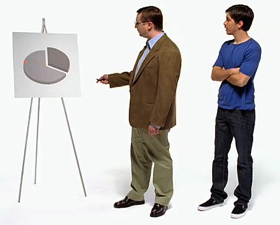Whitespace design (Yellowspace, Blackspace, etc.) has been a hot choice the past few years as some high-profile companies started using it as their anti-marketing response to the more common image-overload approach. To determine our marketing style, it is important for us to move past the descriptors that we like and rather focus on our beliefs and values as the driving force. What did Apple/ TED/ Google believe and value, for example, that caused them to adopt a whitespace marketing style?
Like any form of disruption, marketing disrupts only as long as it is outside the norm, then it must morph to keep people’s attention. In this way, whitespace design can be a valuable long-term style choice because, when used properly, it acts as a blank slate. It allows companies to showcase their adaptation, inserting their latest images and products while maintaining an ongoing theme. It is a style frame that is attractive to people who want the freedom to morph, appear starkly clean, value a direct approach, and are so confident in their product that they do not need a frame for their masterpiece, just the blank canvas behind it. Their products are so complete that they frame themselves.

But it is crucial to avoid simply dousing one’s look with whitespace. Having a lot of white everywhere does not necessarily communicate a clean style nor is it always the best means to do so. It is tricky to work with a design frame that simultaneously provides no frame at all. Image placement, selection, timing, focus points – everything – is amplified when surrounded by a void.
We are a young company and have not established a deep identity in the education market. As we do, the identity needs to have a consistent point of view while maintaining adaptability. This is not something to leave merely to our beliefs and values, but rather to develop in partnership with those who are talented in the architecture of design. The beauty of great designers is that they understand how to translate values through the combination of artistic elements, and how certain aesthetics impact our brains through their embedded language.




